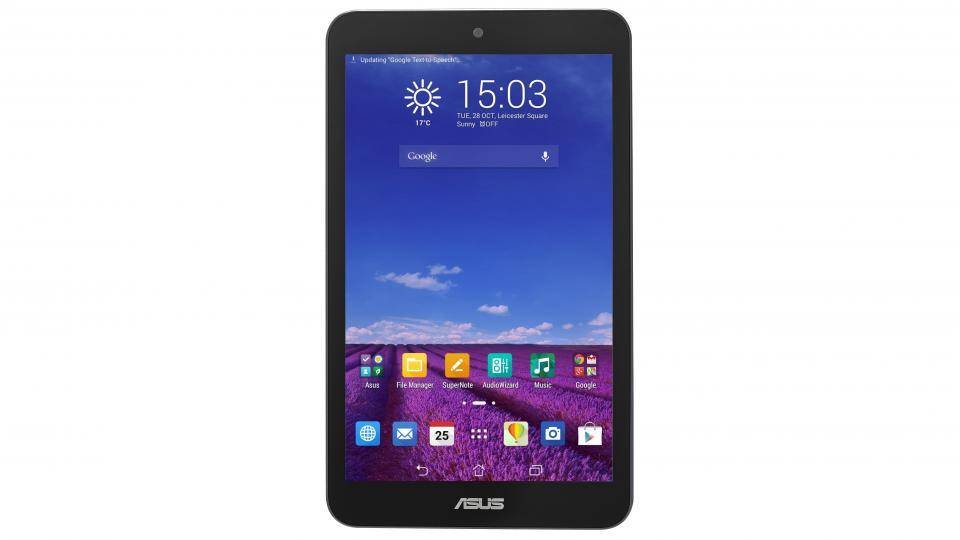
Asus has a great track record when it comes to making tablets. The company was, after all, entrusted with two of Google’s Nexus 7 tablets. We were therefore not surprised it had another hit on its hands with the Asus MeMO Pad 7 , which provided excellent performance for a low price.
The Asus MeMO Pad 8 is the slightly larger model. At 8.3mm thick and weighing 320g, it is both svelte and lightweight. Surprisingly, the MeMO Pad 8 is thinner than its 7in counterpart and only 25g heavier. In contrast, the Tesco Hudl2 is 9mm thick and 410g, and the difference can be felt when you hold the tablets side by side. The Hudl2 does have a fractionally larger screen, however.
The MeMO Pad 8 feels well constructed with little flex in the chassis. The back is made of a soft, textured plastic that is easy to grip. The tablet is available with a black or white behind, but also in eye-catching shades of gold and purple. We reviewed the latter and liked how it made a change from the norm.
The tablet is an unfussy design with no gimmicks such as rear-mounted buttons; power and volume controls are on the side and easy to reach. On one of the long sides is a microSD card slot, but this is exposed rather than hidden away behind a protective flap. The slot lets you expand the tablet’s built-in 16GB of storage with a microSD card up to 64GB in capacity.
Although we came away slightly disappointed by the screen in the Asus MeMO Pad 7, Asus has used a far superior panel in the MeMO Pad 8. It may only have a 1,280x800 resolution, compared to the 1,920x1,200 of the cheaper Tesco Hudl2, but its performance in our tests was a big improvement.
While the MeMO Pad 7 only managed a contrast ratio of 685:1, the MeMO Pad 8 scored an excellent 1,138:1, putting it ahead of the Tesco Hudl2. Its coverage of the sRGB colour gamut was also very good for a cheap tablet, with a measured coverage of 75%, although this is behind the Hudl2. Black levels are an excellent 0.18cd/m2.
We did notice a very subtle emphasis towards green colour tones, but you'll really need to be picking holes to notice. The Asus Splendid app allows you adjust the display, so setting it to a warmer temperature was a big improvement. Viewing angles were also very good, meaning you can view the screen off-centre without too much colour shift. There’s a useful reading mode to help reduce the contrast of the display for more comfortable reading.
